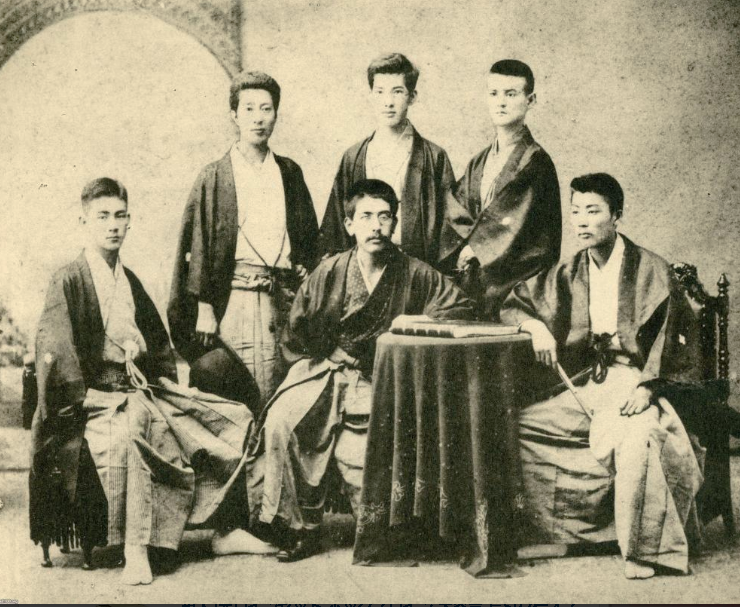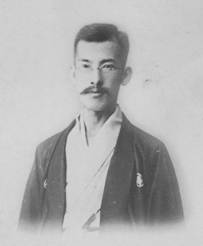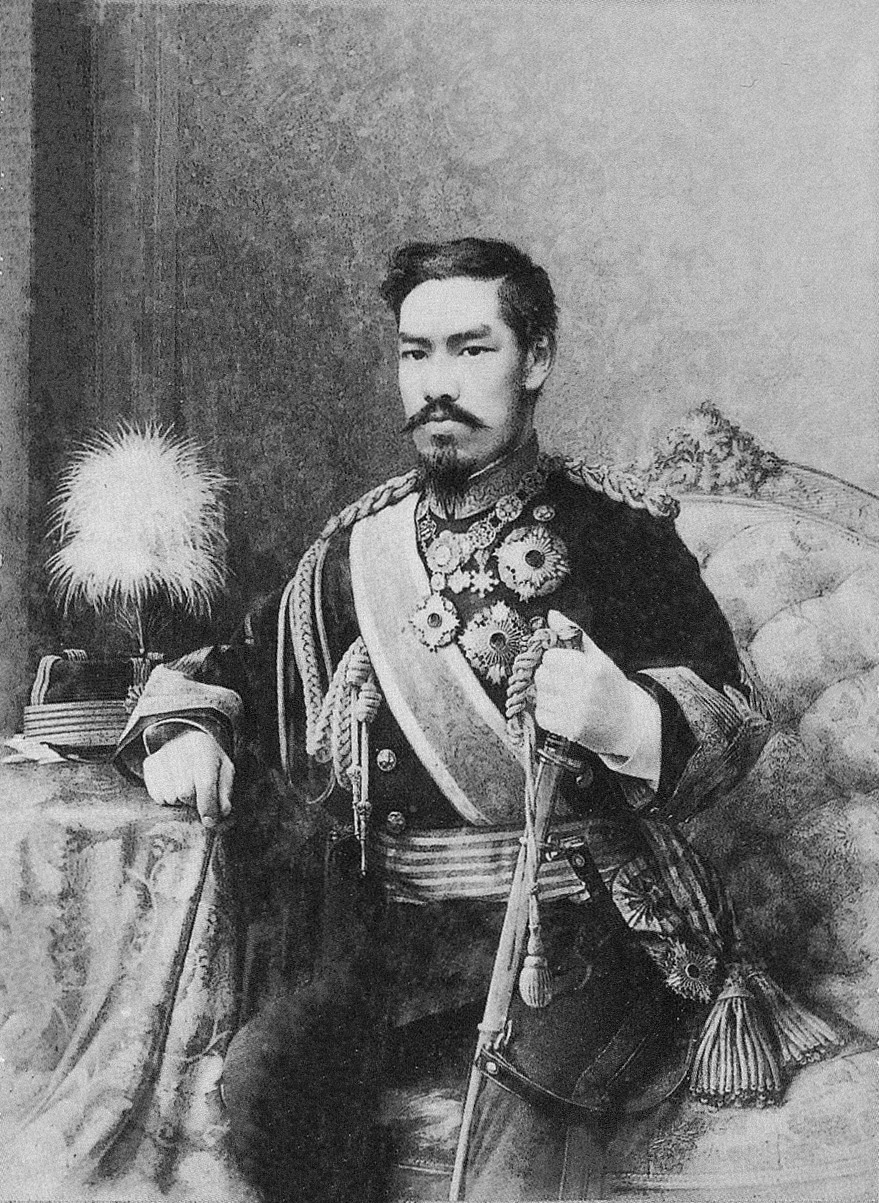|
Ken'yūsha
was a writers' society in Meiji era Japan, chiefly led by Ozaki Kōyō. Ozaki founded the group with and Maruoka Kyūka. Its other members included Kawakami Bizan, Yamada Bimyō , born , was a Japanese novelist.Suzuki, Tomi. ''Narrating the Self: Fictions of Japanese Modernity''. Stanford University Press, July 1, 1997. , 9780804731621. p44 Jim Reichert, author of ''Yamada Bimyō: Historical Fiction and Modern Love,'' w ..., and Hirotsu Ryurō. The group's magazine, , launched in 1885, was the first Japanese journal to focus on literature. It ceased publication in October 1889. References Meiji period Japanese writers' organizations Japanese literature {{Japan-writer-stub ... [...More Info...] [...Related Items...] OR: [Wikipedia] [Google] [Baidu] |
Yamada Bimyō
, born , was a Japanese novelist.Suzuki, Tomi. ''Narrating the Self: Fictions of Japanese Modernity''. Stanford University Press, July 1, 1997. , 9780804731621. p44 Jim Reichert, author of ''Yamada Bimyō: Historical Fiction and Modern Love,'' wrote that Bimyō was "one of the most influential literary reformers of the 1880s" who had "an instrumental role" in producing ''rekishi shōsetsu'', the modern form of a Japanese historical novel.Reichert, p99 According to Reichert, during the 1880s the public perceived Bimyō "to be at the forefront of the literary reform movement, offering a fresh and exciting strategy for reforming Japanese literature." Louis Frédéric, author of the ''Japan Encyclopedia'', wrote that Bimyō was, along with Kōda Rohan, "the most representative authors" of the first modern school of literature to appear in Meiji Japan. History Bimyō was a part of the "Ken'yūsha" ("Friends of the Inkstone") Meiji literary group formed in February 1885, along with ... [...More Info...] [...Related Items...] OR: [Wikipedia] [Google] [Baidu] |
Ozaki Kōyō
was a Japanese author and poet. His real name was , and he was also known by various noms de plume including and . Biography Ozaki was the only son of Kokusai (), a well-known carver in the Meiji period. Ozaki is known as a classic Japanese author writing works in essays, haiku poems, and novels. He grew up in his hometown of Shibachumonmae, located in what is now part of Tokyo, until the age of four, when his mother died. The death of his mother lead him to live with his grandparents in Shibashinmei-cho. His childhood there influenced him in his choice of the penname ''Koyo'', from Mount Koyo of Zojo Temple. Ozaki was educated at Baisen Primary School before entering the Highschool of Tokyofu Daini Junior High School, later dropping out after two years. After he entered the Mita English School. Eventually, he enrolled at the Tokyo Imperial University. There he started publishing a literary magazine called ("Friend of the Ink Stone") in 1885 with some friends. Well-know ... [...More Info...] [...Related Items...] OR: [Wikipedia] [Google] [Baidu] |
Hirotsu Ryurō
was the pen-name of a novelist in Meiji period Japan. He is credited with the creation of the genre in Japanese literature. His real name was Hirotsu Naoto. Early life Ryūrō was born in Nagasaki, Buzen province (present-day Nagasaki prefecture), to a ''samurai-''class family originally from Kurume domain. His father had been trained as a doctor, and was in Nagasaki studying western medicine at the time of the Meiji Restoration. Under the new Meiji government, he became a diplomat, and was involved in the ''Seikanron'' issue between Japan and Korea. Ryūrō was sent to Tokyo in 1874 to study the German language, and subsequently enrolled in the medical preparatory school of Tokyo Imperial University, but left without graduating in 1877. The following year, at the invitation of his father's friend Godai Tomoatsu, he moved to Osaka, and obtained a position as a bureaucrat in the Ministry of Agriculture and Commerce from 1881 to 1885. Around this time, he read the Chinese liter ... [...More Info...] [...Related Items...] OR: [Wikipedia] [Google] [Baidu] |
Meiji Era
The is an era of Japanese history that extended from October 23, 1868 to July 30, 1912. The Meiji era was the first half of the Empire of Japan, when the Japanese people moved from being an isolated feudal society at risk of colonization by Western powers to the new paradigm of a modern, industrialized nation state and emergent great power, influenced by Western scientific, technological, philosophical, political, legal, and aesthetic ideas. As a result of such wholesale adoption of radically different ideas, the changes to Japan were profound, and affected its social structure, internal politics, economy, military, and foreign relations. The period corresponded to the reign of Emperor Meiji. It was preceded by the Keiō era and was succeeded by the Taishō era, upon the accession of Emperor Taishō. The rapid modernization during the Meiji era was not without its opponents, as the rapid changes to society caused many disaffected traditionalists from the former samurai cl ... [...More Info...] [...Related Items...] OR: [Wikipedia] [Google] [Baidu] |
Japan
Japan ( ja, 日本, or , and formally , ''Nihonkoku'') is an island country in East Asia. It is situated in the northwest Pacific Ocean, and is bordered on the west by the Sea of Japan, while extending from the Sea of Okhotsk in the north toward the East China Sea, Philippine Sea, and Taiwan in the south. Japan is a part of the Ring of Fire, and spans Japanese archipelago, an archipelago of List of islands of Japan, 6852 islands covering ; the five main islands are Hokkaido, Honshu (the "mainland"), Shikoku, Kyushu, and Okinawa Island, Okinawa. Tokyo is the Capital of Japan, nation's capital and largest city, followed by Yokohama, Osaka, Nagoya, Sapporo, Fukuoka, Kobe, and Kyoto. Japan is the List of countries and dependencies by population, eleventh most populous country in the world, as well as one of the List of countries and dependencies by population density, most densely populated and Urbanization by country, urbanized. About three-fourths of Geography of Japan, the c ... [...More Info...] [...Related Items...] OR: [Wikipedia] [Google] [Baidu] |
Bizan Kawakami
was a Japanese novelist of the Meiji era. His real name was Akira Kawakami (川上 亮, ''Kawakami Akira''). Born in Osaka Prefecture, he dropped out of the school of liberal arts in Tokyo University and joined Ken'yusha. After struggling with the rise of naturalist literature yet remaining a popular author until his death, he died by suicide at age 40. Aozora Bunko Aozora Bunko (, literally the "Blue Sky Library", also known as the "Open Air Library") is a Japanese digital library. This online collection encompasses several thousands of works of Japanese-language fiction and non-fiction. These include out-o ... has a digitalized collection of his works. at www.aozora.gr.jp Notes ...
|
Meiji Period
The is an era of Japanese history that extended from October 23, 1868 to July 30, 1912. The Meiji era was the first half of the Empire of Japan, when the Japanese people moved from being an isolated feudal society at risk of colonization by Western powers to the new paradigm of a modern, industrialized nation state and emergent great power, influenced by Western scientific, technological, philosophical, political, legal, and aesthetic ideas. As a result of such wholesale adoption of radically different ideas, the changes to Japan were profound, and affected its social structure, internal politics, economy, military, and foreign relations. The period corresponded to the reign of Emperor Meiji. It was preceded by the Keiō era and was succeeded by the Taishō era, upon the accession of Emperor Taishō. The rapid modernization during the Meiji era was not without its opponents, as the rapid changes to society caused many disaffected traditionalists from the former samurai ... [...More Info...] [...Related Items...] OR: [Wikipedia] [Google] [Baidu] |
Japanese Writers' Organizations
Japanese may refer to: * Something from or related to Japan, an island country in East Asia * Japanese language, spoken mainly in Japan * Japanese people, the ethnic group that identifies with Japan through ancestry or culture ** Japanese diaspora, Japanese emigrants and their descendants around the world * Japanese citizens, nationals of Japan under Japanese nationality law ** Foreign-born Japanese, naturalized citizens of Japan * Japanese writing system, consisting of kanji and kana * Japanese cuisine, the food and food culture of Japan See also * List of Japanese people * * Japonica (other) * Japonicum * Japonicus * Japanese studies Japanese studies (Japanese: ) or Japan studies (sometimes Japanology in Europe), is a sub-field of area studies or East Asian studies involved in social sciences and humanities research on Japan. It incorporates fields such as the study of Japanese ... {{disambiguation Language and nationality disambiguation pages ... [...More Info...] [...Related Items...] OR: [Wikipedia] [Google] [Baidu] |




